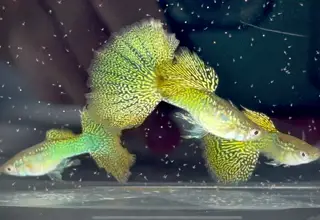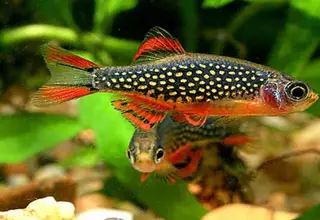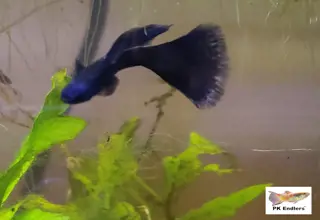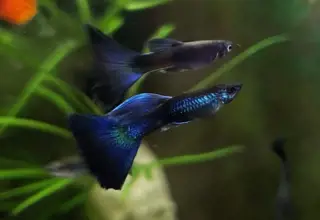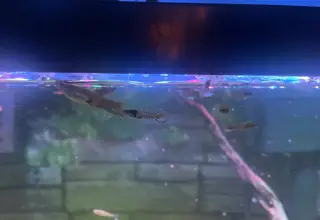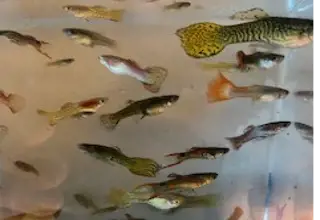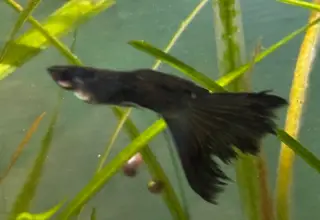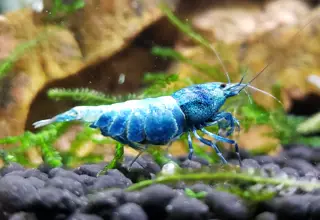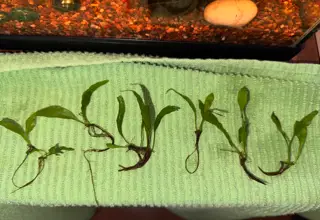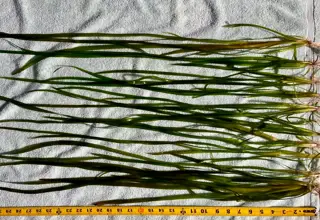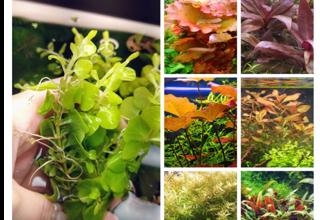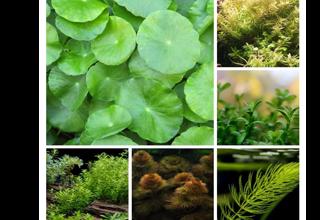Hygrophila Salicifolia: Care, Trimming, Planting & More
Posted by Miles Harrison on 10/16/2022
We use affiliate links and may receive a small commission on purchases.
The Hygrophila Salicifolia plant is a favorite amongst hobbyists for a reason. It’s easy to take care of, attractive, and when given proper care, can give your aquarium a jungle-like appearance!
In this guide, we’ll go over all of the information needed to take care of this magnificent plant. We’ll discuss planting, propagation, trimming, growth rate, and overall care. Let’s get started!
Species Summary
Hygrophila Salicifolia, more simply referred to as "Hygro", is an aquarium plant that hobbyists will typically place in the background of an aquascape. A member of the Acanthaceae family, this flowering plant is a member of the same genus as the more common Water Wisteria, and shares similar care requirements.
Native to the wetlands of southern Asia, this vertical-growing plant can quickly reach the surface of an aquarium. It will even continue to grow past the surface if given the appropriate care.
This species is native to southern Taiwan, where waters are slightly acidic, and temperatures tend to be a bit on the warm side. Variations of the species also exist in parts of Asia and Africa, where its typically found in slow-moving streams and other bodies of water.
Whether you choose to plant a few individual stems or a tight bunch, the Hygrophila Salicifolia plant will truly amaze you! Its narrow leaves and adaptability make this one of our favorite aquatic plants.
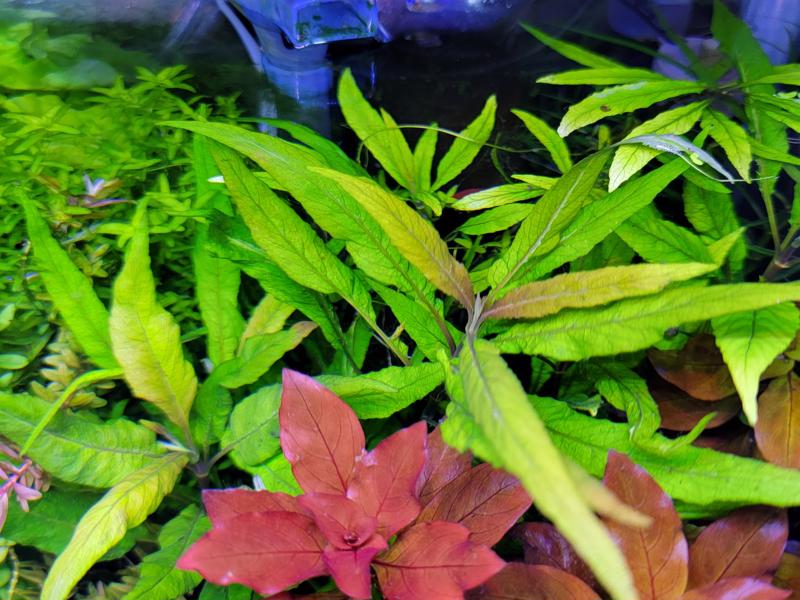
Advantages of Keeping Hygrophila Salicifolia
Not only is Hygrophila Salicifolia enjoyable to look at, but it can also dramatically improve the water conditions in an aquarium. This plant grows fast and some hobbyists might even think it grows too quickly! The best part about this fast growth is that it means the plants will uptake nutrients very rapidly.
The fast nutrient uptake from Hygrophila Salicifolia will remove toxins that are harmful to other tank inhabitants, such as fish or shrimp.
Due to their rate of nutrient uptake, they can expend more energy on photosynthesizing. The process of photosynthesis will release oxygen into the water. Fish will absorb the dissolved oxygen directly into their bloodstream through their gills!
Not only does Hygrophila Salicifolia increase oxygen levels, but it also provides plenty of hiding and resting spots for fish, shrimp, and snails. You’ll frequently see tank mates resting and hiding on this plant's leaves.
Appearance
Hygrophila Salicifolia has an interesting appearance, it has relatively narrow leaves, which branch from the stem every few inches. Healthy plants will have bright-green leaves whereas, in unhealthy plants, the leaves will start to turn yellow, and then eventually brown.
The leaves of this plant tend to vary in length. New leaves typically form near the top of the plant and are a bit smaller, while older more mature leaves near the center of the plant can grow to reach quite a few inches in length.
Hygro has a fragile root system. So you’ll want to make sure the plant's roots appear healthy when purchasing. Damaged or unhealthy roots will appear brown and look as if they’re melting. Healthy roots will be an opaque white.
Depending on the intensity of your lighting, this plant will either appear lime green or dark green. Higher levels of light intensity will produce the lime green coloration.
The stems of this plant are relatively narrow, but not as fragile as a more narrow-stemmed species, such as many of the rotala plants. Healthy stems should have some firmness to them, which makes planting a breeze!
🛒 Shop Aquarium Plants Fish on Light Fish
Size & Growth Rate
Hygrophila Salicifolia grows fast. Some countries even consider this plant to be an invasive species! As a result, always responsibly dispose of any unwanted plant cuttings.
This plant can grow very tall as well. In an aquarium, Hygrophila Salicifolia can grow to over 25 inches in length! Due to its size, we would advise against this plant if you plan on keeping it in a nano aquarium.
Hygrophila Salicifolia leaves can grow to be over 4.5 inches in length. If you’re looking to create a jungle-like aquascape, Hygro might be the perfect plant for the job.
The fast growth rate and sheer size of this plant give you plenty of unique combinations for aquascaping. When the plant is given optimal conditions, with plenty of available light, you can expect this plant to grow a few inches vertically in as short as two-three weeks!
Hygrophila Salicifolia Care
Hygrophila Salicifolia is an incredibly hardy plant. If you’re new to plant-keeping, hygro is the perfect beginner plant for new aquascapers.
One of our favorite parts about owning Hygrophila Salicifolia is its simple care requirements, but that doesn’t mean you can ignore the basics!
You’ll still need to meet the care requirements of this species to grow it successfully in an aquarium.
Tank Size
Unless you plan on keeping 1-2 stems of this plant, Hygrophila Salicifolia should probably be avoided in a nano tank. We recommend an aquarium that’s at least 15 gallons in size.
If it’s smaller than 15 gallons, the plant might look a bit awkward, and with its fast growth rate, it might quickly take over your tank! You can always keep trimming the plant, but it can become quite tedious.
Since this plant grows vertically instead of horizontally, we recommend a vertically-oriented aquarium. Having a tank that’s taller instead of wide will give the plant plenty of time to grow before needing a trim!
Water Parameters
One of the best parts about Hygrophila Salicifolia is that it can do well in a wide range of water parameters. That means you don’t have to worry about purchasing an expensive RO/DI unit or frequently having to mineralize your water.
That being said, some general ranges are as follows:
Temperature: 71°F-77°F
pH levels: 6.2-7.3
Water Hardness: 2-18 dKH
Most likely, if you have an issue with this plant, it won’t be due to the above ranges, and will likely be due to a nutrient deficiency.
Fertilization
One of the best things you can do to promote healthy growth in Hygrophila Salicifolia is to fertilize the water column.
Products such as Seachem’s Flourish and Flourish Excel can greatly improve the growth and health of your aquatic plants.
Dosing Potassium Nitrate (KNO3) and Potassium Phosphate (KH2PO4) at least once a week with low-moderate lighting will prevent your plants' leaves from turning yellow or developing small holes. If you notice the leaves of your Hygrophila Salicifolia starting to melt, consider increasing the frequency of fertilizer dosage.
Substrate
Hygrophila Salicifolia will do well in most gravel-based substrates. We recommend a nutrient-rich substrate such as CaribSea’s Eco-complete . A nutrient-rich substrate will give your plants an additional supply of nutrients that will aid in their growth.
We would avoid sand substrates, as the fine sand grains discourage circulation near the plant's roots. Although it’s possible to plant Hygro in virtually any substrate, don’t be discouraged if your plant occasionally uproots itself.
Over time, Hygro’s root system will begin to take hold in the substrate, and these plants will anchor quite nicely! Once anchored, it will be difficult for fish or shrimp to accidentally uproot the stems.
Lighting
Hygrophila Salicifolia isn’t very picky when it comes to light intensity. As long as you have a minimum of 1-2 watts per gallon of lighting, this plant should grow quite nicely.
Increasing the lighting intensity will increase the plant's growth rate, but be warned - high lighting can quickly result in algae issues.
If you plan on keeping this plant under high light conditions, you’ll want to make sure you have a nutrient dosing strategy in place, and a large number of plants to absorb any excess nutrients. High light tanks may also benefit from CO2 injection, or regular dosing of Flourish Excel .
How to Plant It
Planting Hygrophila Salicifolia couldn’t be easier. All you need to do is plant the stems about an inch underneath the substrate. Over time, the roots will begin to take hold, and your plants will start to grow!
If you’ve recently purchased Hygrophila Salicifolia, allow 2-3 weeks for the plant to transition to the conditions of your aquarium. It’s common for new aquarium plants to take a few weeks to adjust to a new tank. You might even notice some of the plant's leaves start to turn yellow or melt away. But fear not! Once this transition period ends, new leaves will start to form and your plant will take off in no time!
You can make planting a bit easier by purchasing a pair of aquarium tweezers . A good pair of aquarium tweezers is totally worth it. It will allow you to plant the stems a few inches below the surface without damaging them.
Trimming & Propagation
Trimming Hygrophila Salicifolia is relatively straightforward. Using a good pair of aquarium scissors , trim the stems. You can either replant the top half of this plant or toss it out. Either way, the stem will re-grow from the cut portion. Doing this propagation process multiple times will eventually result in a Hygro jungle!
If you’d like to remove some of the leaves, you can trim the leaves near the base of the stem. Leaves that are cut or damaged should be completely removed. The Hygrophila Salicifolia plant can’t regenerate damaged leaves. You’ll be doing your plant a favor by trimming unhealthy leaves. The plant can focus all its energy on creating new leaves, rather than trying to mend older, damaged leaves.
Tank Mates
Hygrophila Salicifolia can do quite well with other plant species. As a background plant, you can pair it with plenty of other background plants, such as Nymphoides Hydrophylla, or Rotala Wallichii.
There is almost an endless amount of tankmates you can pair with Hygro. Some of our favorites include:
- Purple Moscow Guppies
- Cardinal Tetras
- Green Neon Tetras
- Orange Pumpkin Shrimp
- Cherry Shrimp
- Galaxy Koi Betta Fish
- Discus
- White Cloud Minnows
- Celestial Pearl Danios
- Rummynose Tetras
Virtually any small peaceful schooling fish will do quite well with Hygrophila Salicifolia. Invertebrates such as Neocaridina and Caridina will all benefit from co-existing with Hygro. Snails such as assassin snails and mystery snails will also enjoy the coverage that Hygrophila Salicifolia provides in a planted aquarium.
There are some species that you should avoid though. Large cichlid species such as the Electric Blue Jack Dempsey, or large loaches such as the Clown Dojo Loach should be avoided, as they like to pick at plants, and will usually uproot stem plants such as Hygrophila Salicifolia.
Conclusion
As you can see, Hygrophila Salicifolia is one of our favorite plants for a reason. Its stunning appearance and ease of care make this a must-have for anyone looking to transform their fish tank into a planted aquarium.
Not only does this fast-growing plant keep the water clean, but its growth can also create a stunning backdrop that is sure to turn heads.
As always, if you enjoyed this guide, feel free to let us know by sending us an e-mail or creating a topic on our community forum. Thanks for reading!
December's Giveaways on Light Fish
